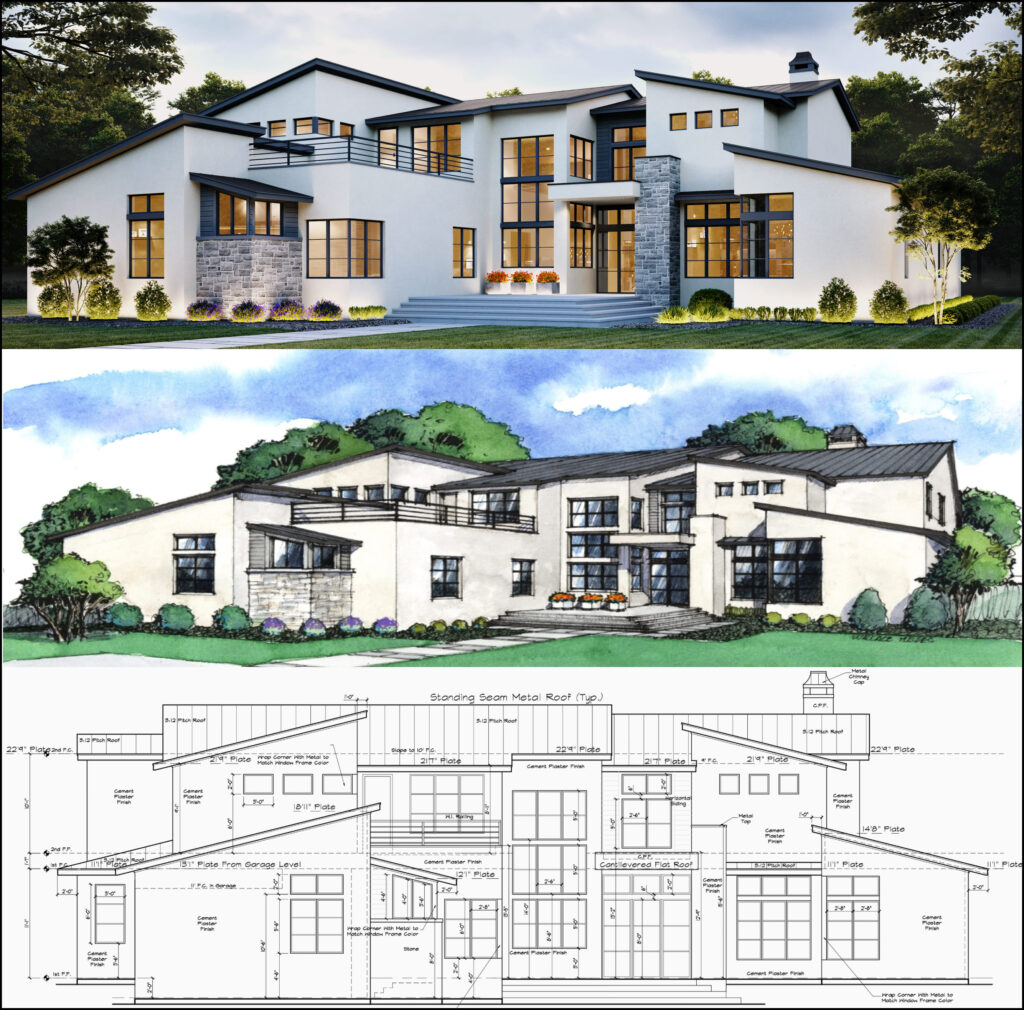The Essential Role of an Architect in Forming Sustainable Urban Settings for Future Generations
The function of a designer in crafting sustainable urban atmospheres is increasingly pivotal in responding to the difficulties of environment modification and urbanization. By seamlessly incorporating environmental principles into their styles, engineers not only improve the aesthetic and functional high quality of urban spaces yet additionally address pressing issues such as energy effectiveness and social equity.
Recognizing Lasting Urban Style
Sustainable metropolitan style integrates eco-friendly principles with city preparation to produce atmospheres that are not just comfortable yet additionally resistant. This approach highlights the value of incorporating natural systems right into the urban textile, ensuring that growth fulfills the demands of the here and now without compromising the capability of future generations to fulfill their very own demands. Crucial element of sustainable city design consist of efficient land usage, the promotion of biodiversity, and the integration of eco-friendly areas, every one of which add to enhanced lifestyle for locals.
In addition, sustainable urban style focuses on the decrease of the urban warmth island impact, enhanced air high quality, and reliable stormwater monitoring. It encourages making use of renewable energies and energy-efficient structure practices, which considerably lower carbon impacts. Lasting urban layout fosters social equity by creating accessible public spaces and promoting mixed-use developments that cater to diverse populations.
Via thoughtful planning and innovative style techniques, lasting city settings can enhance area resilience against climate adjustment while cultivating economic advancement. This holistic technique not just addresses instant city obstacles but additionally prepares for healthier, more lasting cities for generations to come.
Secret Duties of Engineers
Designers play a pivotal role fit sustainable metropolitan environments by converting design principles into tangible frameworks and rooms. Their duties encompass a wide variety of tasks that add to the overall success of city layout jobs.
Primarily, designers carry out thorough website analyses to understand the ecological, social, and cultural context of their jobs. This fundamental expertise educates their layout decisions, making certain that structures integrate with their surroundings. They likewise take part in collective procedures with stakeholders, including city planners, designers, and the neighborhood, cultivating an inclusive approach to city development.
Furthermore, architects are tasked with creating designs that maximize energy efficiency, resource preservation, and functionality. They should comply with local zoning legislations, developing codes, and sustainability certifications, making sure conformity while pressing the boundaries of technology.
Furthermore, architects are in charge of taking care of the design procedure, coordinating with different experts throughout the building phase to make certain that the vision is realized properly (cda architects). Eventually, their duty is not entirely concerning visual appeals; it directory has to do with developing durable, flexible areas that improve the lifestyle for current and future generations, preparing for lasting urban living
Innovative Products and Techniques

Furthermore, improvements in click technology have led to the advancement of high-performance products, such as insulated concrete types (ICFs) and solar glass, which contribute to power preservation and harness eco-friendly energy. Methods such as passive solar style and green roofings even more exemplify just how style can balance with all-natural systems, minimizing reliance on synthetic heating & cooling.
Furthermore, the combination of wise materials, which adjust to environmental adjustments, uses appealing opportunities for improving building performance. These products can reply to temperature level changes or wetness levels, enhancing convenience and sustainability.
Ultimately, the strategic selection and application of cutting-edge products and strategies empower designers to develop city areas that are not just useful and aesthetically pleasing however also resilient and ecologically responsible, ensuring a lasting future for generations ahead. cda architects.
Neighborhood Interaction and Cooperation
The success of innovative materials and strategies in sustainable metropolitan design is substantially improved by active neighborhood interaction and cooperation. Designers need to identify that the developed atmosphere profoundly affects the lives of local homeowners, making it crucial to entail them in the style process. Engaging the community fosters a sense of possession and responsibility, making sure that developments not just satisfy aesthetic and functional demands yet additionally click now mirror the worths and desires of those who inhabit them.

Successful neighborhood engagement likewise assists in focusing on social equity within city growth. By considering the voices of marginalized populations, architects can create spaces that are inclusive and equitable. By doing this, neighborhood interaction and partnership end up being important to attaining genuinely lasting metropolitan atmospheres that serve the requirements of existing and future generations.
Future Fads in Lasting Style
An arising focus on adaptive reuse and circular economic climate principles is readied to redefine the landscape of lasting style. As cities face raising populace densities and environmental challenges, engineers are significantly transforming to methods that enhance existing structures rather than seeking brand-new builds. This method not only preserves social heritage however likewise substantially decreases resource intake and waste.
Furthermore, developments in innovation are forming future patterns in sustainable architecture. The assimilation of wise materials and structure systems permits real-time energy management, boosting effectiveness and minimizing carbon footprints. Innovations such as environment-friendly roof coverings, living wall surfaces, and energy-generating facades are coming to be conventional practices, better advertising environmental balance within city atmospheres.
Moreover, a shift towards biophilic style is obtaining grip, emphasizing the connection in between nature and human well-being. By integrating natural aspects, architects produce rooms that foster psychological health while promoting biodiversity.
Verdict
Finally, designers are pivotal ahead of time sustainable metropolitan settings through their knowledge in layout, ingenious products, and community interaction. By focusing on energy efficiency and source preservation, these specialists add to the development of resistant urban rooms that satisfy the demands of present and future generations. The combination of eco-friendly principles not just enhances livability yet likewise promotes social equity, ensuring advancements resonate with the values and desires of the areas they serve.